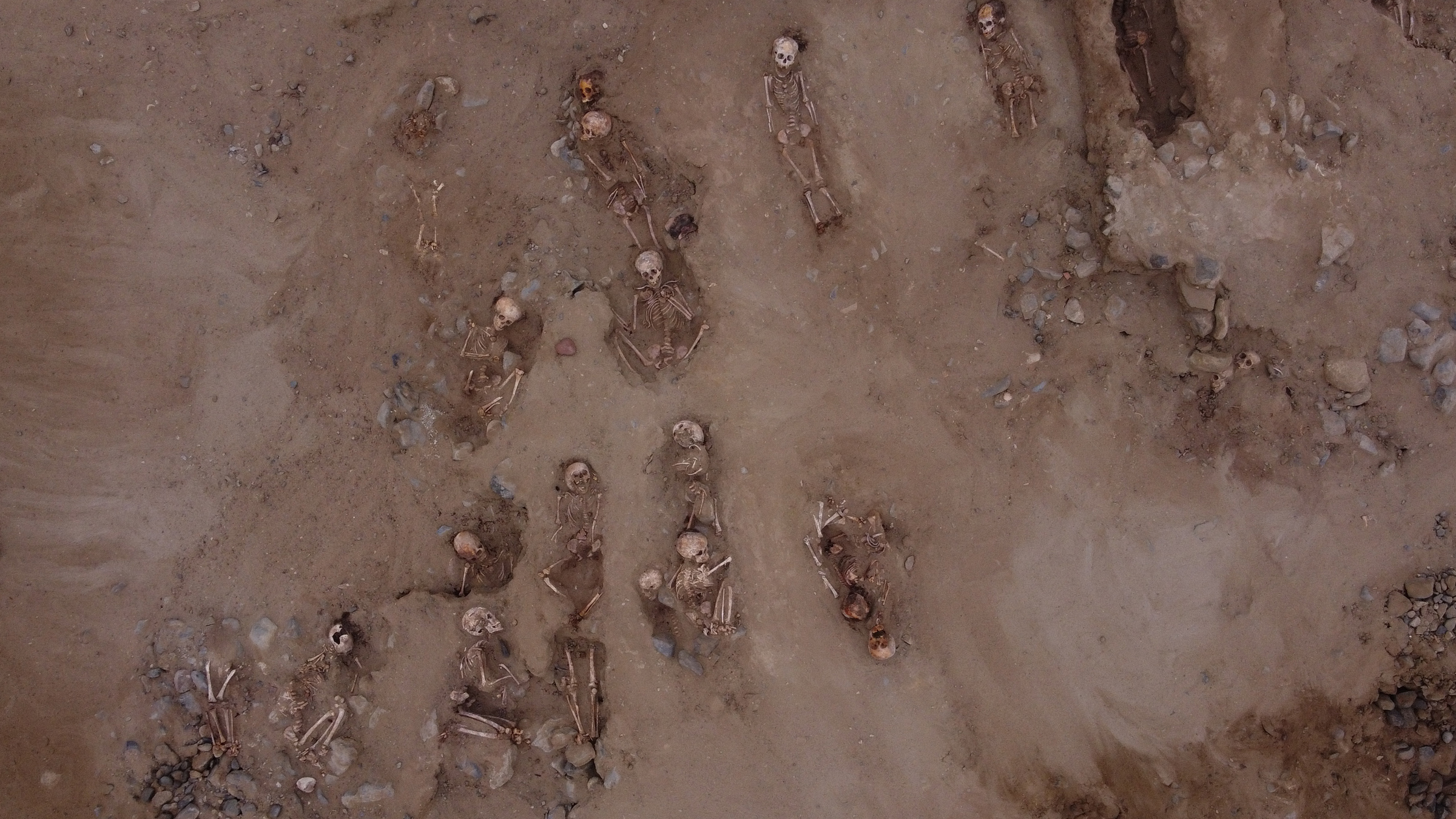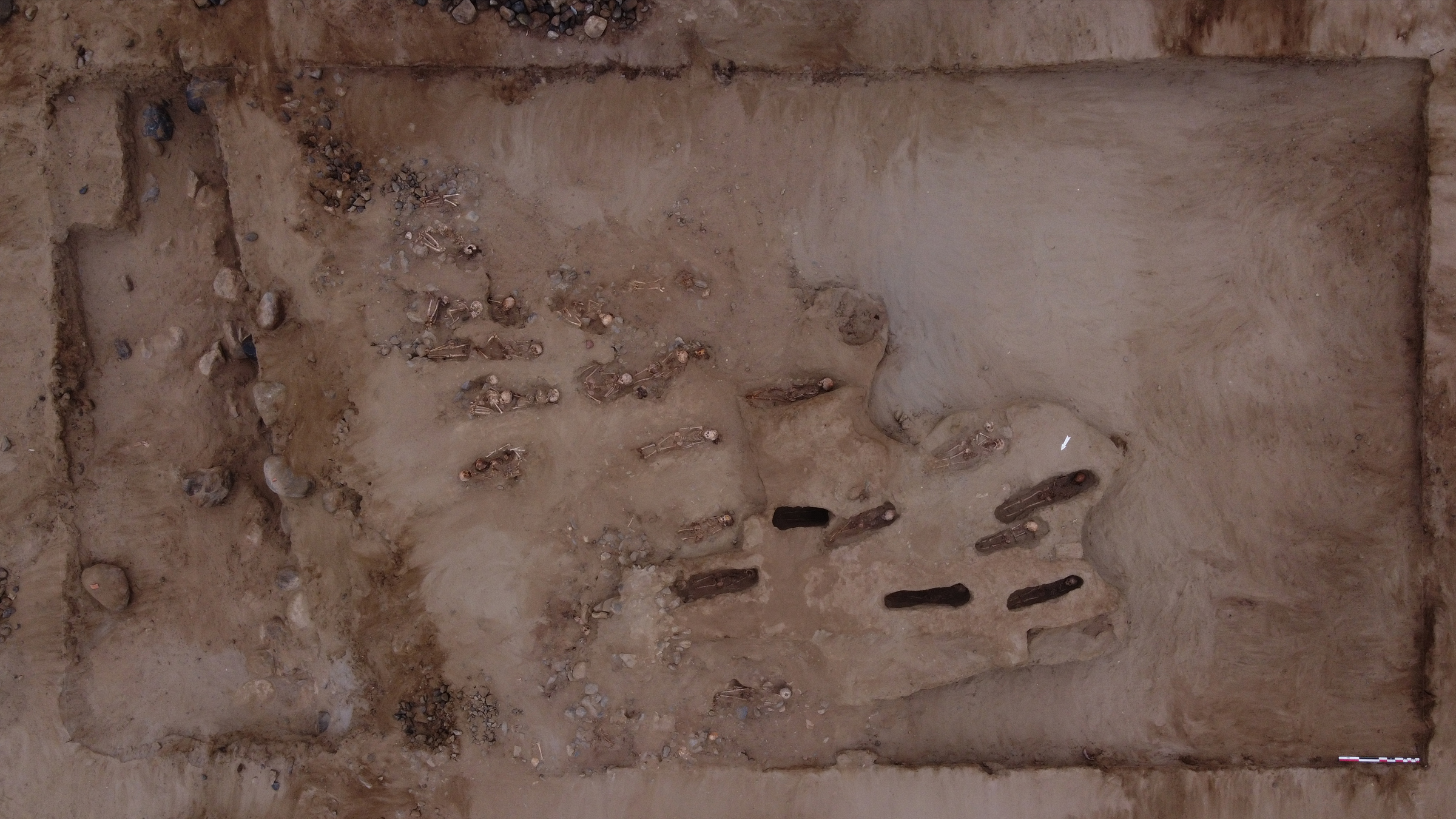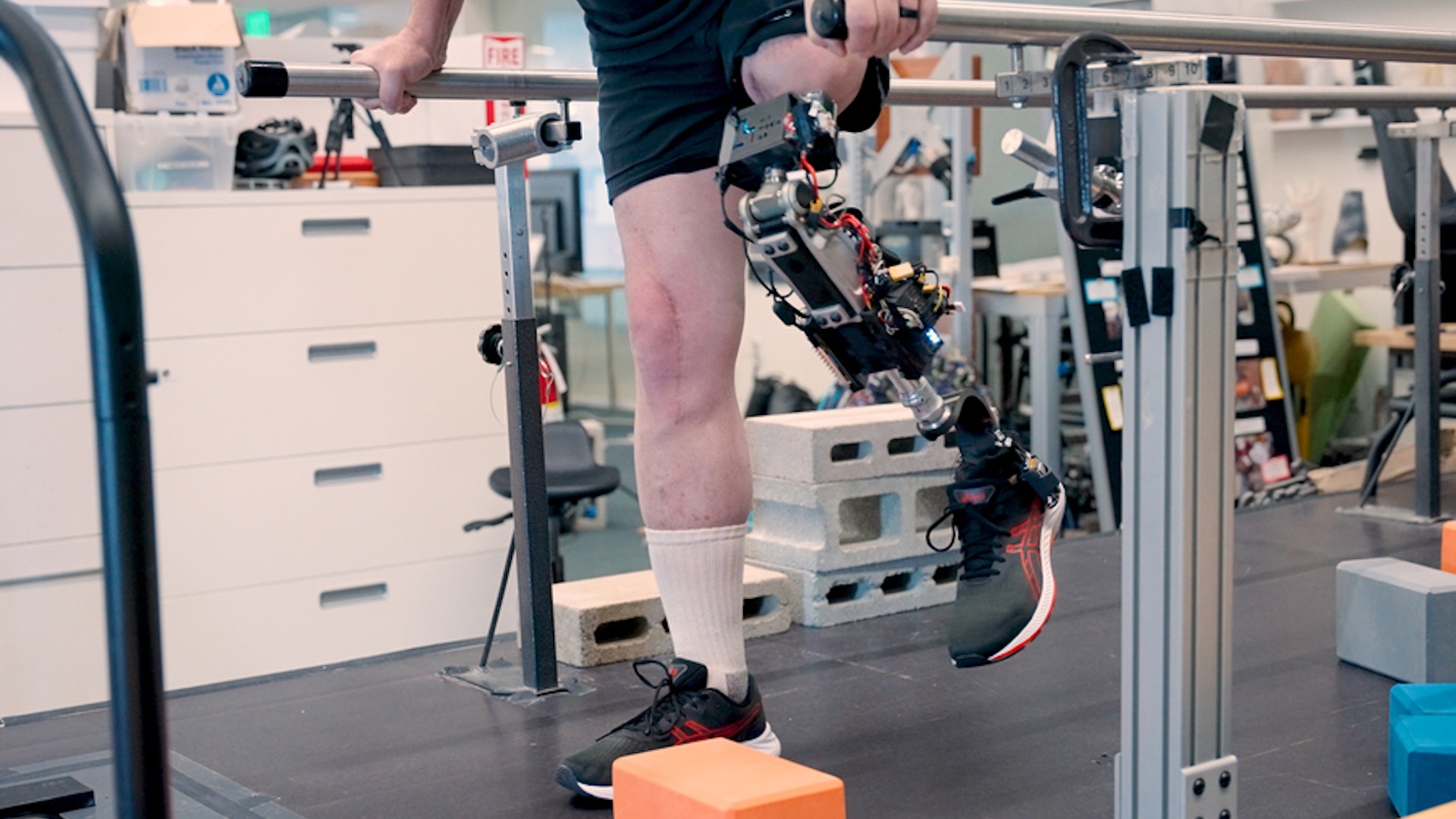76 child sacrifice victims with their hearts ripped out found in Peru excavation
Many more are likely to be found.

The remains of dozens of child sacrifice victims have been unearthed in Peru, and many more are likely waiting to be found, archaeologists say.
The skeletons show evidence that the children's hearts were removed, said Gabriel Prieto, an assistant professor of anthropology at the University of Florida who directs the excavations at Pampa La Cruz, the site near Huanchaco where the remains were found.
All 76 skeletons had a "transversal clean cut across the sternum," Prieto said, which suggests that "they possibly opened up the rib cage and then they possibly extracted the heart."
"They were buried on an extended position, with the feet toward the east," Prieto told Live Science in an email. "They were buried on top of an artificial mound." It's not clear why the sacrifices were located in this position in this place. "We thought that the area, and particularly the mound, was free of Chimu child sacrifices, but we found the opposite," Prieto said.
Related: At least 227 slaughtered children found at world's largest child sacrifice site in Peru
Excavations have been underway at Pampa La Cruz for several years. So far, 323 child sacrifice victims have been found at the site, and another 137 child and three adult sacrifice victims were found at a nearby site called Las Llamas. These remains also show that the children's hearts had been removed.

Based on the archaeological finds found so far, there are likely many more child sacrifices waiting to be discovered near Huanchaco, Prieto said. "It could be more [than] 1,000 victims, as crazy as it sounds," he said.
Get the world’s most fascinating discoveries delivered straight to your inbox.
Radiocarbon dating needs to be done on the 76 newly uncovered skeletons, but previously found victims at Pampa La Cruz dated to between A.D. 1100 and 1200, Prieto said. Around this time, the Chimu people, known for their fine metalwork and the city Chan Chan, flourished in the area.
Why the Chimu would have engaged in child sacrifice in this area on such a large scale is unclear, Prieto said, but the Chimu also built an artificial irrigation system and new agricultural fields nearby, and some of the sacrifices may have been done to "sanctify" this agricultural system.
People who lived in Huanchaco during the first millennium A.D. also practiced human sacrifice in the area, said Richard Sutter, an anthropology professor at Purdue University Fort Wayne, who is part of the team working at Huanchaco. This means that the Chimu may have been carrying on a long-running practice in the area, Sutter said in an email.

Why were children sacrificed?
Scholars who were not involved with the excavations told Live Science that the finds at Huanchaco are important. While other cases of child sacrifices are known from the Andean area, "what is striking here is the scale, of course," Peter Eeckhout, a professor of pre-Columbian art and archaeology at the Université libre de Bruxelles in Belgium, told Live Science in an email.
Why the child sacrifices were carried out is difficult to tell, Eeckhout said, noting that writing was not used in Peru at this time and thus there are no written records detailing the youngsters' deaths. Problems with climate or environmental changes that may have disrupted agriculture in the area could have played a role in the sacrifice, Eeckhout said.
"It's an amazing site with the potential to help us understand much better what was going on at this time in prehistory," Catherine Gaither, an independent bioarchaeologist, told Live Science in an email. "I think the reason for the sacrifices was likely related in some way to a cultural response to environmental changes that brought about significant cultural upheaval. There may have been associations with environmental events like an El Niño, for example," a climate cycle in which warm water in the Pacific Ocean shifts closer to South America causing changes in the weather, she said.
The team is requesting permission from Peru's Ministry of Culture to transport some samples abroad so that the specimens can undergo testing to determine more exact dates.

Owen Jarus is a regular contributor to Live Science who writes about archaeology and humans' past. He has also written for The Independent (UK), The Canadian Press (CP) and The Associated Press (AP), among others. Owen has a bachelor of arts degree from the University of Toronto and a journalism degree from Ryerson University.
